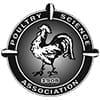Explore all the information on
Poultry management
Poultry management usually refers to the husbandry practices or production techniques that help to maximize the efficiency of production. Sound management practices are very essential to optimize production. Scientific poultry management aims at maximizing returns with minimum investment. A carefully controlled environment that avoids crowding, chilling, overheating, or frightening is almost universal in poultry farming. Cannibalism, which expresses itself as toe picking, feather picking, and tail picking, is controlled by debeaking at one day of age and by other management practices. The feeding, watering, egg gathering, and cleaning operations are highly mechanized. Birds are usually housed in wire cages with two or three animals per cage, depending on the species and breed, and three or four tiers of cages superposed to save space. Cages for egg-laying birds have been found to increase production, lower mortality, reduce cannibalism, lower feeding requirements, reduce diseases and parasites, improve culling, and reduce both space and labour requirements.
Vijay Durairaj (Huvepharma) explains the severity of this disease, and comments on diagnosis and prevention best practices, in this interview during IPPE 2023 in Atlanta, USA....
Comments : 0
Recommendations: 1
On-farm euthanasia is not a pleasant topic, but when raising poultry, there are often circumstances that require birds to be euthanized, such as illness, injury and disease, because it is not always possible or feasible to treat affected birds. Euthanasia refers to “good death” and is distinct from other terms such...
Comments : 0
Recommendations: 0
As discussed in our previous newsletter, circumstances arise that require poultry to be humanely euthanized. This newsletter provides a brief overview on-farm methods for the euthanasia of small numbers of poultry. Most of these methods are different from methods used at processing and methods used for culling or depopulation during disease...
Comments : 0
Recommendations: 0
What is Stunning? How is it Regulated? Stunning is the process of rendering broilers unconscious or insensible before slaughter and various mechanisms may be used in facilities to achieve insensibility (Humane Slaughter Association, 2015). The methods used depend on the facility's location (on-farm vs. in a...
Comments : 0
Recommendations: 0
I. INTRODUCTION Right now, there are two different models of production in the world and they are based on the income of the people. We have 7% of the population that lives on more than US$50 per day (Pew Research Centre, 2015) and the percentage of food expenses is a minimal part of their income. These rich countries are moving towards production where cages are banned and the birds need to be provided with space outside of the barn. However, 71% of the world population lives...
Comments : 1
Recommendations: 0
INTRODUCTION Water is the primary fluid necessary for human life. About 60% of the human body composition is water and life would not be possible without it (Chaplin, 2001). Not only is water important for the optimal functioning of the human body, but also it is the most important nutrient in the diet of some animals and the development of plants. A significant percentage of the water in the world is used in agriculture practices. In the United States, 80% of the national water...
Comments : 2
Recommendations: 1
Alltech is pleased to announce that Dr. Roy Brister has joined the team as a Strategic Poultry Advisor. With nearly four decades of experience in the poultry industry, he will focus on supporting sales and technical teams, bridging the gap between suppliers and poultry integrators, and driving new research. He is also...
Comments : 0
Recommendations: 1
The parents of broilers are defined as broiler breeders. In contemporary poultry industry practices, there are many selection criteria for broiler breeders. Beyond selecting for future broilers, maximizing broiler breeder characteristics (i.e. reproductive success) is also important. In essence, we are not only selecting for...
Comments : 1
Recommendations: 1
Dan Wood (Potters Poultry) explains the success he's found in promoting poultry through social media in this interview with PSA. Let's Squawk About It is a monthly interview segment by the Poultry Science Association....
Comments : 1
Recommendations: 0
by Sam Shafer
Poultry scientists show that floor eggs are less likely to be fertilized—and much more likely to be contaminated than previously thought
Some hens like to lay in nest boxes. Others not so much. Where hens lay their eggs can make a big difference in egg viability. “Floor eggs” tend to be cracked, contaminated with bacteria, and much less likely to hatch.
A new study in ...
Comments : 0
Recommendations: 0
Allowing poultry access to vegetated, woody spaces will benefit poultry welfare. One system that incorporates the production of vegetation and livestock, including poultry, is called a silvopasture system. Woody vegetation can provide a source of income for producers while providing preferred habitat for chickens. Silvopasture...
Comments : 0
Recommendations: 1
Laying hens are female chickens raised for egg production. The egg production system in the US is currently undergoing a transition from conventional cages to cage-free housing systems. The number of cage-free housing has increased from 4% hens in 2004 to 28% at the end of 2020 (USDA-NASS, 2021). Cage-free systems provide space...
Comments : 0
Recommendations: 0
by Sam Shafer
Poultry scientists find hens prefer lower UVA/B light
A new Poultry Science ® study suggests hens do like sunlight—just not too much. In fact, by monitoring hen behavior under different strengths of UVA and UVB light, the researchers found that hens prefer to spend more time in lower levels...
Comments : 0
Recommendations: 1
by Sam Shafer
Switching from blue to red light in laying operations may benefit birds, but there are caveats
According to new research in The Journal of Applied Poultry Research , hens can benefit from both blue and red light—if these lights are provided at specific points in production. The study, led by scientists at Mississippi,...
Comments : 0
Recommendations: 0
A highly pathogenic strain of Avian Influenza (sometimes called bird flu) is currently spreading across the United States. The virus has been detected in six States since January 2022 (see Figure 1). Avian influenza: about the...
Comments : 0
Recommendations: 0
Background & Objectives Korean Native Chicken (KNC) market field keeps enlarging by the increasing consumer interest on KNC due to the desired flavor, texture and healthy value of its meat. Despite the demand for native chickens increasing due to the requirement for diversification of consumers, making good KNC layer species to meet the demand of consumers is very limiting. It is necessary to secure and maintain the various the pure-line in order to improve production...
Comments : 0
Recommendations: 0
Free bus service from field operations will again be available for the upcoming 2023 International Production & Processing Expo (IPPE). Company employees and contract producers of companies actively involved in the production and processing of poultry and meat or the production of animal food, who are also members of the U.S. Poultry & Egg Association (USPOULTRY), American Feed Industry Association (AFIA) or North American Meat Institute (NAMI), are eligible to...
Comments : 0
Recommendations: 0
INTRODUCTION Dietary amino acids (AA) and crude protein (CP) have been demonstrated to affect BW, body composition, organ development, and feathering in broiler breeder pullets (Hudson et al., 2000; Ekmay, 2011; van Emous et al., 2013). Breeder pullets are fed to achieve target BW, and meeting growth objectives during the rearing phase has been related to improvements in reproductive parameters such as fertility, hatchability, and embryo mortality (Leeson and Summers, 2000;...
Comments : 0
Recommendations: 1



.jpg&w=3840&q=75)









.jpg&w=3840&q=75)


.jpg&w=3840&q=75)






.jpg&w=3840&q=75)

.jpg&w=3840&q=75)







